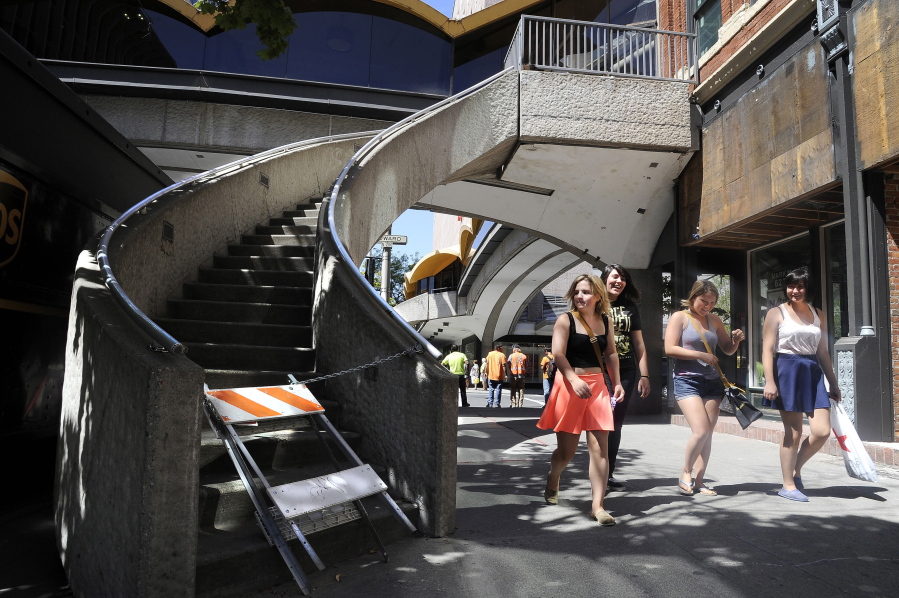DES MOINES, Iowa — In a city where cranes and construction barriers mark a surge in new downtown apartments, hotels and offices, the sidewalks in Des Moines’ core can be strangely quiet.
The reason is about 20 feet overhead, where bridges link a climate-controlled skywalk system that snakes through nearly four miles of downtown. When the skywalk was built in the 1970s, the idea was to protect office workers from the frigid winters in Iowa’s largest city and encourage businesses to resist the pull to suburban office parks. It was an instant success.
But one era’s brainstorm has become the next generation’s headache as cities are now desperate to add life to downtown. For them, the question is how to create lively streets when no one walks outside anymore.
Across the country, a debate is growing over what to do with the cozy corridors, bridges and tunnels that have helped create urban ghost towns. Cincinnati decided to dismantle half its 1-mile-plus system and Baltimore has taken down seven bridges, with plans to remove two more, to push people back onto the streets. Minneapolis, which is spending $50 million to overhaul its glitzy Nicollet Mall downtown, is being urged by some residents to do the same. Spokane, which has one of the most extensive systems, is turning away from any further expansion.
It’s an excruciating choice, giving up on something because it has become too effective.
Skywalks have joined pedestrian malls, downtown parking garages and new traffic patterns as the latest downtown experiment to achieve mixed or unintended results over the years.
While cities were flailing with new strategies, young people and baby boomers suddenly rediscovered urban living and provided new hope — but mostly for places with a lively atmosphere.
Tom Murphy, an urban revitalization expert and former mayor of Pittsburgh, said holding on to those young workers is essential because they’re highly sought by employers.
“For our history, it was always that people went where the jobs were,” Murphy said. “For the first time, we are now watching as jobs go where the people are.”
Jon Snyder, who was a member of the City Council in Spokane when that city was expanding its skywalks, said the city is now worried about something that was once a matter of local pride.
“It’s not like skywalks don’t have benefits, but they signal we’ve given up on our street-level environment,” said Snyder, who now advises Washington’s Gov. Jay Inslee on outdoor issues.
But in cold-weather cities, it won’t be easy to get people to walk outside again.
“I feel almost like a hypocrite,” said Ben Lockin, who works in a downtown investment company and ducks into the skywalk at the first opportunity. “As a person from Des Moines, I’d like to see more shops open, but I love the skywalks.”



